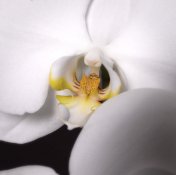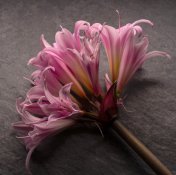Yes. Take the shot with the digital firing an off-camera flash. I set up a small shield of aluminium foil over the Pentax camera flash that triggered a slave which in turn triggered the main flash sitting behind a thin sheet for diffused lighting. This worked very well and I could look at the digital image to get the exposure right. But I want to use my Mamiya TLR for these photographs.
So...plugging in the same ISO, how far would the settings differ between digital and analogue? Just a ball-park figure. I could just use the TLR with a flash exposure meter, but the digital camera gives me an instant picture of how the flash enhances the subject.
I'd recommend investing a tiny bit of cash (certainly less than $50) in cheap wireless remote flash triggers (look at the Cowboy Studio trigger if your TLR doesn't have a hot shoe) so that you don't have to do the rigamarole with the aluminum foil on the master flash.
I'll also echo the recommendation to avoid TTL and just use manual mode on the flashes. The flash power and exposure values should transfer just fine to film, factoring ISO values, as long as your exposure time is less than one second. If your shutter speed exceeds 1 second (which would only be of consideration for the ambient exposure obviously, not the flash exposure) then you have to consider the reciprocity characteristics of the film. I don't expect this is an issue for the kind of photography you are doing.
Note that for the film, the box ISO is not necessarily the ISO to consider for equivalence to the digital camera. If you have tested your film and determined that it exposes best at, say, a slower ISO rating, use that rating when considering your transferred exposure value. Let's say your DSLR is exposing at ISO 200, and you tested your film to expose best at ISO 100. When I got things right on the DSLR, I'd boost flash power one stop and go one stop slower (eg, from 1/60 to 1/30) on shutter speed (but not touch aperture, to preserve depth of field).
That's the other thing to consider: depth of field. You will only get the same depth of field if you are using a lens of the same focal length on the TLR. This means that your medium format TLR is going to be shooting with a wider angle of view, so the composition is going to be different (35mm on a crop frame dslr is a normal lens, equivalent in terms of angle of view to 80mm on the TLR). The depth of field between those two lenses for a given aperture is going to be different.
For purposes of exposure, this doesn't matter, but if you are trying to get the same composition, with the same depth of field, you will have to make accommodation for changes to your aperture. You'll probably stop down your aperture on the TLR. Increase flash power by an equivalent amount (eg, if you drop down one full stop in aperture, double your flash power, for example, from 1/8 power to 1/4 power). And of course, if you stop down your aperture, you'll need to reduce your shutter speed an equivalent amount to compensate the ambient exposure.
Is that enough info to totally confuse the situation? ;-)


 Digitest Balloon Beauty Light and Fill
Digitest Balloon Beauty Light and Fill


 Digitest Balloon Beauty Light and Fill
Digitest Balloon Beauty Light and Fill
